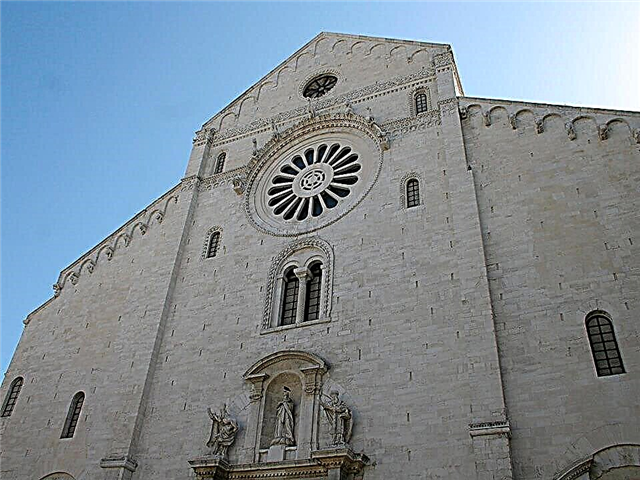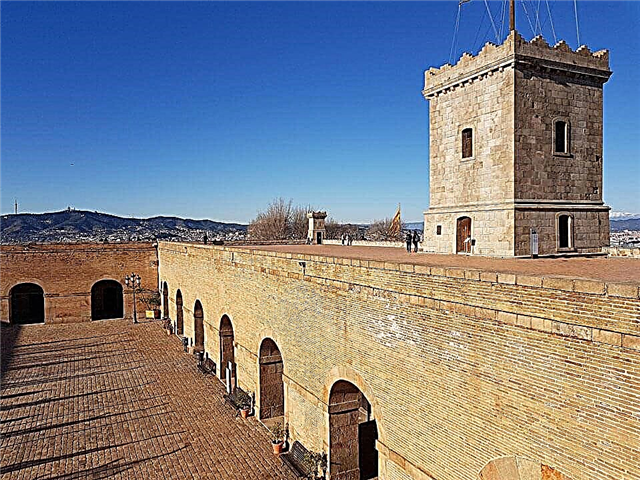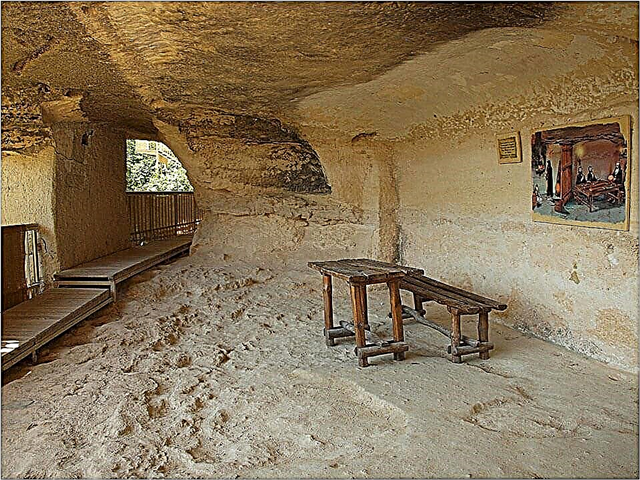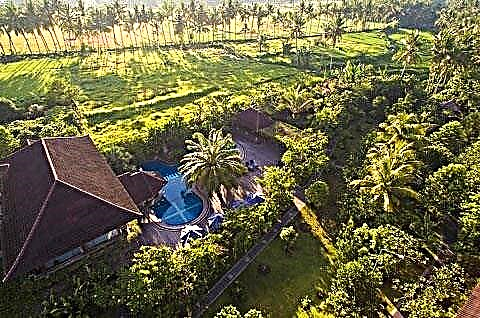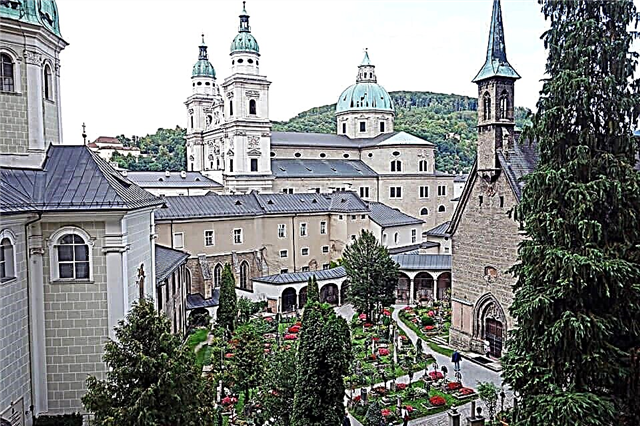The old Austrian city of Salzburg can offer tourists a rich excursion program. Fortifications, beautiful Catholic churches, monasteries, museums, palaces and parks are simply enchanting. And also - Mozart was born in this city, and many places have been preserved here associated with the life and work of the legendary composer. Those who have come to Austria for a long time do not have any questions, you can have time to get acquainted with all the sights. But what advice is there to those who do not have time to spare? What to see in Salzburg in 1 day on your own - make your choice.
How to get from the airport to the center
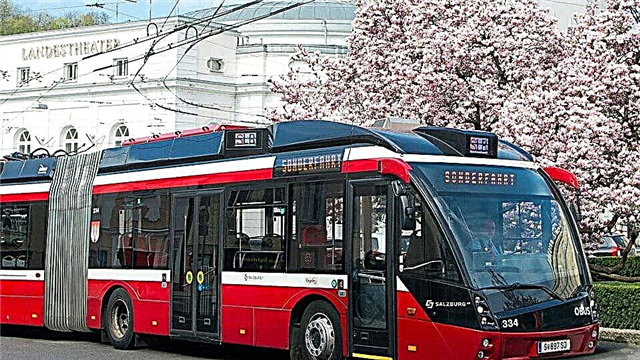
It is not difficult to get from the airport to the city center using public transport. The most convenient way is to take trolleybus no. 2, which departs from the central exit every 10 minutes. The road will take no more than half an hour. It is even more comfortable to take a taxi - especially if you are traveling with a lot of luggage. Of course, you can take a car right outside the airport building.
But now most tourists order their transfer online. In this case, they will be waiting for you at the specified time, and the taxi will be exactly what you need - for example, with a large trunk. And finally, you can rent a car, get behind the wheel yourself, and go get to know Salzburg on your own.
Mount Kapuzinerberg

Mount Kapuzinerberg is not that big. Its height reaches 640 m, and it will not be difficult for tourists to climb up. This can be done in two ways: a staircase leads up from the embankment, and a serpentine road from Stefan Zweig Street. The effort will definitely pay off. Upstairs you will see an ancient monastery that belongs to the order of the Capuchin monks. It was built at the end of the 16th century.
You won't be able to see the monastery itself: the monks do not let tourists in. You can only visit the church. During the reign of Adolf Hitler, they wanted to close the monastery and build a stadium here. But in 1945, the monks returned to their former place, and life flowed as before. Also on the top of the mountain you can see the fortress wall. Nearby there is a house where the famous writer Stefan Zweig once lived.
Hohensalzburg Fortress

This is a very picturesque place, it is not for nothing that artists have chosen it. The fortress is located on the top of Mount Festung. There is no longer such an ancient citadel in such good condition in Europe. The main part of the buildings was erected in 1077 at the direction of Bishop Gebhardt. But then numerous reconstructions followed, the fortress acquired towers and a bastion. And in the 16th century, additional premises were built inside, where the nobles could stay comfortably.
Since there were always a lot of people on the territory of the fortress, it was necessary to deliver food and various things here. For this purpose, a funicular was built on the border of the 15th and 16th centuries. It is especially worth noting that he was the first in the world. When an uprising took place in these lands in 1525, and the people tried to overthrow Prince Matthäus Lang, he managed to hide behind thick fortress walls. During the offensive of Napoleon's troops, the citadel surrendered without a fight. At the beginning of the 20th century, there was a prison on the territory of the fortress.

Today tourists come here to admire the panorama of the city and look at ancient objects. Here are - the church of St. George, the palace of the archbishop, various buildings, a fire tower, a prison and much more. You can admire the organ of the 16th century and visit the torture chamber. The Golden Hall is very beautiful, trimmed with leather with gold embossing. You can even see what the restroom looked like in the Middle Ages. There is also a museum on the territory of the fortress, which contains an excellent collection of ancient weapons, as well as numerous gizmos of that era. There are always a lot of artists here during the summer months.
Nonnberg abbey

One of the oldest landmarks in the city. The monastery was founded at the beginning of the 8th century, thanks to Bishop Rupert, who was later recognized as a saint. The monastery was led by the sister of Bishop Erentrud, and girls from noble families were accepted here. At the beginning of the 15th century, there was a severe fire here, and restoration work continued for over a quarter of a century. After that, poor girls also got the opportunity to become nuns.
At the beginning of the 16th century, the abbey and Hohensalzburg were connected by a funicular, in the 17th century chapels were built. Today the monastery operates, but there is no free passage to its territory for tourists. You can only visit the Christmas Church and listen to the chanting of the nuns. In the vicinity of the monastery there is a good restaurant serving vegetarian food. Nonnberg Abbey gained particular popularity after the release of the film "The Sound of Music", the plot of which is associated with this monastery of the Benedictines.
Abbey of st peter

Another old and very interesting abbey, this time for men, which was founded by Bishop Rupert in 696. By the way, he is buried here - or rather, his relics are located here. The monastery is located near the Mönchsberg mountain. This is a whole complex, which includes the church of St. Peter of the 12th century, buildings of the 17-18th centuries, a unique - without exaggeration - library, where even the scores of Haydn and Mozart are kept, as well as a cemetery.
At the entrance to the temple you can see a statue of St. Rupert, at his feet - a barrel of salt, because he is the spiritual patron of the "salt city" of Salzburg. The stucco decorations in the church date back to the 18th century, and the statue of the Virgin Mary to the 15th. The old cemetery is also interesting - noble people have been buried here since the 9th century, and many outstanding personalities still find their last refuge here. The grave of Mozart's sister Nannerl has been preserved.

You can visit the catacombs, carved into the rock, hermit monks lived here, they were buried and buried here. Another curious place related to the abbey is the Long Gallery, which displays paintings. The abbey also bakes delicious rye bread; there is also a restaurant nearby that serves monastery wine and dishes prepared according to recipes that have been passed down from generation to generation. Don't miss the chance and try old Austrian dishes.
Franciscan Church

The old church dates back to the 13th century and combines Romanesque and Gothic styles. The statues of the Savior, the Holy Apostle Peter and St. Rupert are beautiful. If you look at the ceiling of the temple, you can see that it personifies a sky full of stars. The history of the church is connected with the temple of St. Virgil, which was actually destroyed at the behest of Frederick Barbarossa at the beginning of the 12th century.
The restoration work was supervised by the famous architect Hans von Burghause. The altar of the 15th century has not survived, but the Virgin Mary with the Child Jesus, the work of Michael Pacher, has survived to this day. Attention is drawn to the beautiful filigree lattices over the new altar and the frescoes that adorn the temple. The Franciscan church is second only to the cathedral in its beauty.
Archbishop's residence

To see the buildings of the Old and New Residences, you need to come to the Residenzplatz square. They were built in the 17th century, when the city was being renovated in the Renaissance style. At one time, a guest house was located in the premises of the New Residence. Initially, the construction was ordered to begin by Archbishop Wolf Dietrich von Raithenau, but the work was completed under his successor Marcus Sittikus at the beginning of the 18th century.
The interior decoration in the Baroque style turned out to be simply luxurious. The ceilings and walls are covered with paintings, there are many stucco decorations and elegant tapestries.Pictures of painters of the 16-19th centuries are also exhibited here; the gallery was opened in 1923. The most valuable painting is the portrait of a woman by Rembrandt. Art critics have come to the conclusion that it depicts the mother of the great artist.
The fountain in front of the residence is very beautiful. It is decorated with a sculptural group - horses and newts. The other building of the residence houses the Sattler Museum. Here you can see the panorama of the city, made in the first quarter of the 19th century. There is a clock on the building that appeared here at the end of the 19th century.
Residenceplatz

This square simply cannot be bypassed. After all, it is here that you can imagine what Salzburg looked like in the 16-17 centuries. The surrounding buildings have retained their medieval flavor. And if you find yourself here during the summer months, you have the chance to watch the broadcast of the Salzburg Festival. The history of the square is closely connected with the construction of the Old and New residences. A little later, the construction of the cathedral began. At the same time, the houses of noble residents have also been preserved - some of these buildings date back to the beginning of the 16th century. And, of course, the most beautiful fountain in Austria, by Tommaso di Garzona, will also cause your admiration.
Gallery Residences

This is one of the best museums in the entire country. Once here, you can see paintings by Rembrandt, Rubens and other great masters: Dutch, Italian, French. It was planned that the gallery will receive its first visitors in 1919, but this was prevented by the First World War, the opening took place 4 years later. At one time, the cultural treasures of Austria were taken away by Napoleon's troops, and the gallery staff began to re-collect paintings of great artistic value.
At first they were even borrowed from other museums and owners of private collections to show to the public. After the Second World War, the gallery opened in 1952, but only old canvases can still be seen here. There is a permanent exhibition and several temporary ones - patrons of art periodically bring here certain paintings.
Monument to Paul Fuerst

Tourists must be photographed near this unusual monument, another name for which is "Mozartkyugel". It is a large golden ball with confectioner Paul Fürst at the very top. It was he who invented an unusual candy, a delicious chocolate ball, and dedicated the delicacy to the great composer - it was just the centenary of his death.
The monument to the candy, which was loved not only by the inhabitants of Austria, but throughout Europe, was erected in the middle of the 20th century on the Kapitelplatz square. The audience invariably gathers near the "Ball of Mozart". Despite the fact that the installation looks extremely modern, it surprisingly organically blended into the overall look of the old square. Paul Fuerst is depicted standing at full height, and in life size.
Salzburg Cathedral

One of the most famous Catholic cathedrals in the world is located where the Residenzplatz and Domplatz squares intersect. He makes an amazing impression. In the 8th century, there was a small church on this site, in 1167 it was destroyed by a fire.Only three decades later, a new cathedral was erected here - a huge and luxurious one. But during the Second World War, as a result of a direct bomb hit, the dome and the altar were destroyed. It was possible to restore the appearance of the cathedral by 1959.
By this time, a very beautiful bronze gate was made, on which the dates of the consecration were indicated. Up to 10 thousand worshipers can be in the cathedral at the same time. The huge building is made in the Renaissance style. The marble façade is magnificent, the sculptures of the apostles Peter and Paul, saints Virgil and Rupert, the patrons of Salzburg, attract the attention.
Inside you can see sumptuous Baroque decoration, many frescoes and an old bronze font, in which Mozart was baptized. It is worth taking the opportunity to hear organ music, which makes an unforgettable impression. Residents love their cathedral very much and are rightfully proud of it. It seems that here the soul really soars to the sky.
Salzburg Museum

It is here that you can most fully get acquainted with the history of the city. Literally everything is presented here: from archaeological finds to interesting documents acquired today. Multimedia equipment will make the excursions especially colorful and memorable. The museum was founded in 1834, and since 2007 has been housed in the New Residence of the Archbishops. On the first floor you can see temporary exhibitions, on the second - learn about the people who glorified the city with their glorious deeds. In addition to documents and portraits, there are many installations on display here.

On the third floor, guests have the opportunity to trace how the architecture of the city has changed, how more and more Baroque buildings have become here. It is interesting to observe how a small settlement turned into a real treasury, where many architectural masterpieces were collected. On the fourth floor, archaeological finds and exhibits from the Middle Ages are presented - from primitive stone products to the Gothic altar. You can see ancient tools, weapons, jewelry, coins. The collections of the museum are constantly being replenished.
Mozart square

The square named after the great composer is located in the center of the ancient city, and there are always a lot of people here, especially foreign tourists. Of course, you can see a statue of Mozart here. It is the work of the sculptor Ludwig von Schwanthaler and has been decorating the square since the mid-19th century. The composer wears loose clothes with picturesque folds, in his appearance at the same time - greatness and simplicity. The palace of the archbishops is also located here, and everyone who comes to the square hears the beautiful ringing of bells - these are the melodies of Mozart and Haydn. You can also look into the museum, where many wonderful paintings are exhibited.
House of Mozart
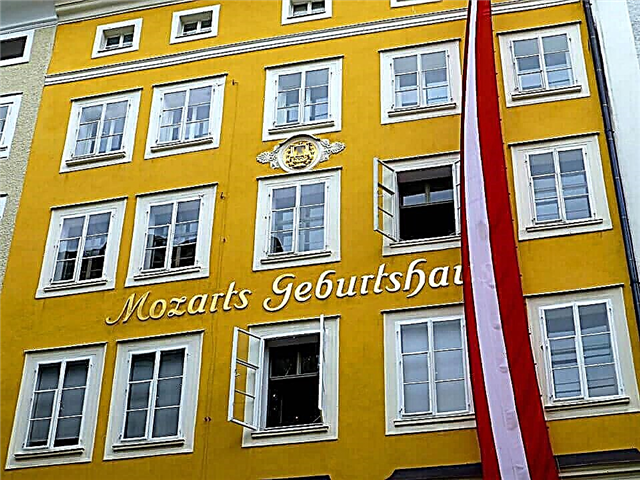
Of course, grateful residents could not help but arrange a museum in house number 9, in Getreidegasse lane. It was here that Mozart was born in 1756, who later glorified the ancient city. The apartment where the family lived was quite small - a bedroom, a living room, an office. Children were born and died at an early age, two of the seven survived - Wolfgang and Maria Anna. The museum was opened in 1880.
Here you can see historical rooms, musical instruments, scores, letters, portraits. On the first floor there are antique furniture, on the second - exhibitions that replace each other, on the third one can learn what theater meant in the life of Mozart. His operas made a tremendous impression on the audience - this is reflected in the dioramas. Perhaps this is the place where it is absolutely impossible not to visit, so be sure to include it in your program.
House of nature
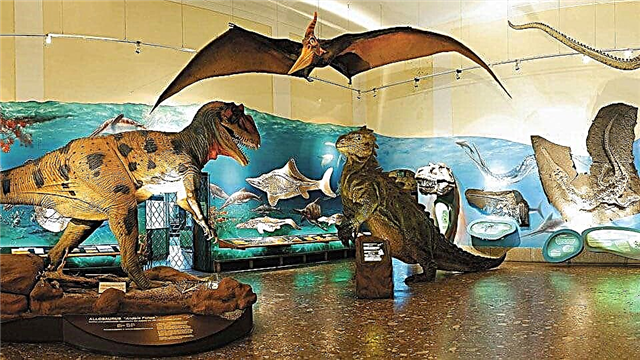
The House of Nature is a real magnet for visitors to the city. Children will especially like it here. Here you can see dinosaurs and other creatures that have long since become extinct. It also provides the opportunity to get a lot of interesting information about the Universe and even visit the role of the discoverer of other worlds. In the interactive science center, you will be given the chance to conduct various experiments. For example, generate an electric current or build a bridge.

The huge aquarium is unusually beautiful - there are real thickets of corals and numerous tropical fish. Snakes and lizards live in a cozy zoo. Cultures of distant countries are presented in the respective halls. There is an interesting exhibition that tells about the functioning of the human body. In a word, here you can get to know our planet and its inhabitants better.
Mirabell Palace and Gardens

The palace is located near the cathedral. It was built at the beginning of the 17th century by order of Archbishop von Raithenau for his beloved Salome Alt. The beautiful Salome gave birth to 15 children to the archbishop.Then the palace went to von Reitenau's successor - Markus Sittikus, It was he who gave the magnificent architectural structure its current name. Since then, the palace has been reconstructed and rebuilt more than once, giving it features of baroque and neoclassicism.

It was in this building that the future king of Greece, Otto of Bavaria, was born. For many years, the archbishops lived here, now the magistrate is located here and the burgomaster lives here. Mozart gave concerts in the Marble Hall of the palace, here Eva Braun's sister (Hitler's friend) married. In the 17th century, a garden was laid around the palace, here you can see numerous sculptures of Roman gods, admire the Garden of Dwarfs. Newlyweds always come here to take beautiful photos.
Of course, you won't be able to see all the sights listed above in one day. But a lot can be done if you order, for example, a sightseeing tour. Or go to get acquainted with the city on your own and competently draw up a route, including an inspection of the most interesting objects for you in the program, and planning time for lunch and a short rest. Salzburg is a real treasure of Austria, and you will never forget its churches, museums and old squares.



